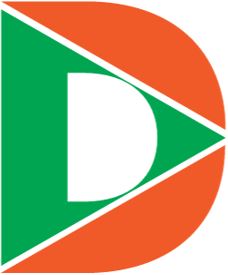A Comprehensive Exploration of the Global 3D Animation Market
Introduction
The 3D animation market has been a dynamic and rapidly evolving industry. The demand for 3D animation has been fueled by various sectors, such as entertainment, gaming, advertising, education, and healthcare. Here are some key points about the 3D animation market:
Entertainment Industry Dominance
The entertainment industry, including film and television, has been a major driver for 3D animation. The ability to create visually stunning and realistic animations has made 3D technology essential for many blockbuster movies and popular TV shows.
Gaming Industry Growth
The gaming industry has witnessed significant growth, with 3D animation playing a crucial role in creating immersive and visually appealing gaming experiences. Virtual reality (VR) and augmented reality (AR) have further increased the demand for advanced 3D animation techniques.
Advertising and Marketing
3D animation has become an integral part of advertising and marketing campaigns. Companies use animated content to create engaging and memorable promotional materials, including commercials, product visualizations, and interactive content.
Education and Training
The use of 3D animation in education has expanded, with applications ranging from interactive learning materials to simulations for training purposes. This includes fields such as medical training, architecture, and industrial processes.
Technological Advancements
Continuous advancements in technology, such as improved rendering capabilities, motion capture, and real-time rendering engines, have contributed to the growth of the 3D animation market. These innovations allow for more realistic and efficient animation production.
Global Market Trends
The 3D animation market growth is global, with major players in North America, Europe, and Asia. The presence of established animation studios, software developers, and a skilled workforce in these regions has contributed to their prominence in the market.
Freelance and Independent Studios
The rise of freelance animators and independent animation studios has brought diversity to the market. Online platforms and marketplaces have facilitated collaboration between animators and clients, allowing for a wider range of creative projects.
Challenges
Despite its growth, the 3D animation industry faces challenges such as high production costs, competition, and the need for continuous skill development due to evolving technologies.
Outlook
The future of the 3D animation market is likely to be influenced by emerging technologies such as artificial intelligence and machine learning, as well as the integration of 3D animation into new mediums and platforms.
Market Size and Revenue
The 3D animation market has experienced substantial growth in terms of market size and revenue. The increasing demand for high-quality visual content across various industries has contributed to a significant market expansion. As technology continues to advance, the cost of producing 3D animations has become more manageable, allowing a broader range of companies to incorporate 3D elements into their projects. This accessibility has played a crucial role in driving market growth, leading to a larger and more diverse consumer base.
Software and Tools
The availability of sophisticated 3D animation software and tools has been a key factor in shaping the market. Established software packages like Autodesk Maya, Blender, and Cinema 4D have become industry standards, providing animators with powerful tools to create intricate and realistic animations. The continuous development of these software solutions, with regular updates and new features, keeps the industry at the forefront of technological innovation. Additionally, the accessibility of training and educational resources for these tools has contributed to the skill development of animators worldwide.
Collaboration and Globalization
The 3D animation market has embraced collaboration on a global scale. With the rise of digital platforms and communication tools, collaboration between artists, animators, and studios from different parts of the world has become more seamless. This globalization has led to diverse storytelling and artistic styles, enriching the overall landscape of 3D animation. The ability to collaborate across borders has also opened new opportunities for talent acquisition, allowing companies to tap into a global pool of skilled animators.
Emerging Trends and Applications
Several emerging trends are shaping the future of the 3D animation market. Real-time rendering, virtual production techniques, and the integration of 3D elements in live events and broadcasts are gaining prominence. The use of 3D animation in virtual fashion shows, architectural visualization, and virtual experiences has opened novel applications for technology. Additionally, the incorporation of 3D animation in immersive technologies like AR and VR continues to evolve, offering new avenues for creative expression and user engagement. As the market moves forward, staying attuned to these emerging trends will be crucial for companies to remain competitive and innovative in the ever-evolving landscape of 3D animation.
Rise of Streaming Platforms
The surge in popularity of streaming platforms has significantly influenced the 3D animation market. With the increasing demand for original content on platforms like Netflix, Hulu, and Disney+, animation studios are producing a diverse range of 3D animated series and films. This trend not only creates new opportunities for content creators but also intensifies the competition, prompting studios to enhance the quality of their 3D animations to captivate audiences and stand out in the crowded streaming landscape.
Environmental Considerations and Sustainability
Environmental consciousness has started to play a role in the 3D animation industry. As rendering and animation production can be computationally intensive, there is a growing awareness of the environmental impact of these processes. Studios are exploring ways to optimize rendering farms and adopt eco-friendly practices. Additionally, advancements in hardware efficiency and cloud-based rendering solutions are being explored to reduce the carbon footprint associated with rendering large-scale 3D animation projects.
Integration of AI and Machine Learning
The integration of artificial intelligence (AI) and machine learning (ML) technologies is becoming more prevalent in the 3D animation market. AI algorithms are being employed to streamline certain aspects of the animation process, such as character animation, facial expression recognition, and automated lip-syncing. This integration not only enhances efficiency but also opens up new creative possibilities. As AI and ML continue to advance, their role in automating routine tasks in the animation pipeline is expected to increase, allowing animators to focus more on the creative aspects of their work.

As a DIGITALTECHSIDE author, the majority of our articles have been focused on technology, blogging, business, lifestyle, social media, web design and development, e-commerce, money, health, education, entertainment, SEO, travel, and sports.
Contact us at digitaltechside@gmail.com if you have questions of anything.




